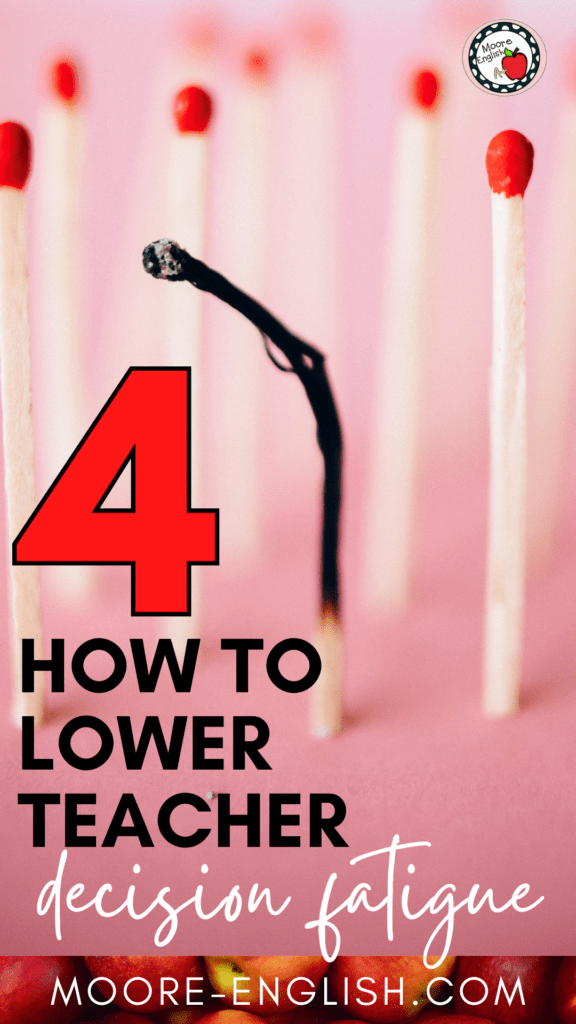Teachers make more than 1500 decisions a day! That’s at least 3 decisions per minute! As a result, teachers often suffer from decision fatigue, which can lead to procrastination, tension, and frustration.
Since teachers make so many decisions, it can be difficult to identify decision fatigue as a trigger. However, when you begin to consciously count up every small decision, they really add up. For example, one student in my third block asked to go to the restroom. That led to four more students doing the same. Do I let them all go? Do I stop the madness? Do we take a whole class elementary-style bathroom break?
For me, decision fatigue can lead to paralysis. I feel like a deer in the headlights, my eyes twitching, unable to move forward. However, paralysis in the classroom can lead to all kinds of classroom and time management problems.
So today I want to share 4 strategies to defeat decision fatigue!
This post this post may contain affiliate links. Please read the Terms of Use.
Reduce Decisions
To immediately lower decision fatigue, we have to lower the number of decisions in the classroom. (Of course, making a decision to lower decisions is also…a decision. Facepalm.)
- First, clear classroom procedures can remove decisions. Good classroom procedures can help automatize your classroom. More importantly, they can help students take ownership of the classroom and the decisions that keep it running.
- Second, responding to student questions with a resource rather than an answer can also lead to empowerment. For example, when students ask what time class ends, I point to the bell schedule posted at the back of the room. After I do this a few times, students just stop asking that question. Take the time to train yourself to respond with a resource and lower your decision fatigue!
Grading Time Decisions
Some classroom decisions relate to managing grading and other responsibilities. What do you prioritize? Which chore comes first? These two strategies can lower gradeing-related decision fatigue!
- First, make a rolling to-do list. Instead of a one-and-done to-do list, keep a rolling list that you can work on all the time. Prioritize the items that need to be completed this hour, this week, this month. After a few weeks of working with this system, your brain will automatically begin to prioritize and remove decisions from your plate. I especially need a rolling to-do list during back-to-school season!
- Similarly, a rubric is a great way to take decisions out of the grading process. A strong rubric is so clear and easy to use that students can accurately assess themselves. Regardless of whether students self-grade, attach a rubric ot everything in order to reduce decision fatigue! Grab my favorite rubric today!
Weird Bonus Tip
Some decisions are extraordinarily important, but some decisions are not. However, by the end of the day, I am often so tired of making decisions that even trivial questions leave me paralyzed. For example, deciding the order in which to complete household chores can sometimes stymie me. Should I do laundry first, or should I wash my hair?
When this happens, I flip a coin. Or, really, I ask Siri to flip a coin. At the end of the day, I don’t really care if I do laundry or wash my hair first. What I need is a sense of direction and purpose, and flipping a coin has proven to be the perfect solution! Sometimes, if there’s more than one option, I will ask Siri to pick a random number.
Occasionally, I use this same strategy at school. Do I start grading with first or third block? Do I change the calendar first or update the bulletin board? Building this simple habit has helped me reduce my decision fatigue by leaps and bounds!
What strategies do you use for combatting decision fatigue?












